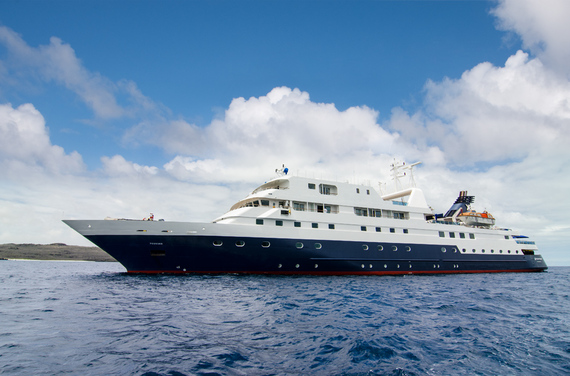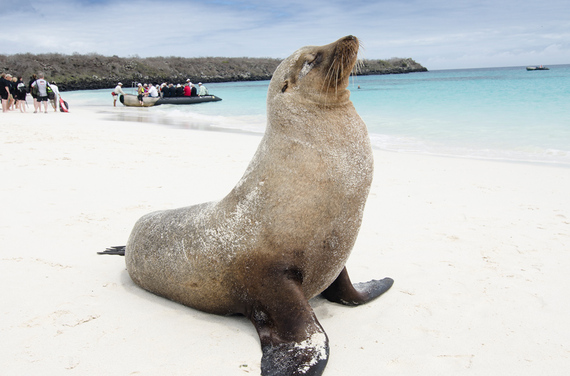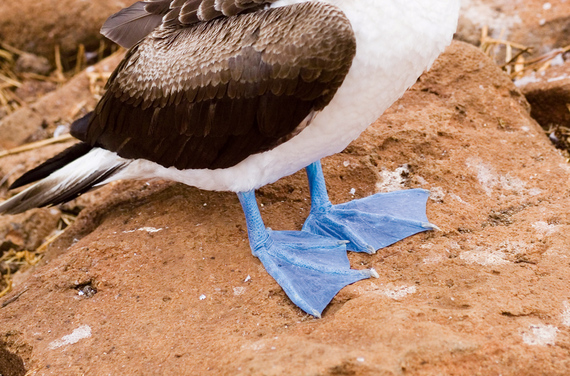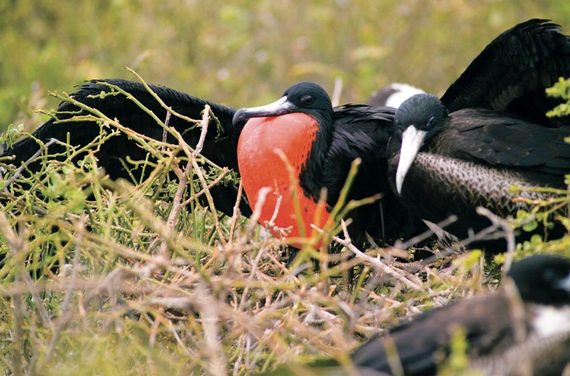There should be a sign here reading "Please don't step on the sea lions." That was my first thought as my 11 fellow passengers and I prepared to disembark from a Zodiac raft on the first day of our Galapagos Islands cruise.
We'd come to this remote place, about 600 miles west of the Ecuador mainland, aboard Celebrity Cruise Lines' Xpedition, a 98-passenger luxury vessel built in Germany with the look and feel of a BMW.
Our rubber craft landed on the rocky shore of this island, one of several the ship visits on its various itineraries, and we were immediately greeted by a troop of sea lions, one of which plopped down on the path in front of us, blocking our way -- not menacingly, just lazily.
Our trip took place in March, mating season for blue-footed boobies, so named because -- you guessed it -- their webbed feet are a striking baby blue colour. Consequently, the feathers were flying.
To attract females, the males make a weird whistling sound as they pull their wings back, puff out their chests and tilt their heads. The females squawk. And then they do their little mating dance, circling each other coquettishly. It's survival of the fittest and Charles Darwin, who put these equatorial islands on the map, would approve.
"Qua-qua-qua-qua," barked one female booby to a particularly persistent male suitor she wanted no part of. "Qua! Qua! Qua! What part of quaquaquaqua! don't you understand, buster?"
The slight but pervasive smell of blue-footed booby poop filled my nostrils and I had a Tippi Hedren moment as I tiptoed through and around the throngs of birds. They clearly outnumbered me, but we weren't about to remake "The Birds" here. Clearly, they didn't want me for lunch.
A few steps later, we passed a cluster of big iguanas lying on top of each other, one big barely distinguishable mass.
Farther on, male frigate birds with big red neck pouches sat in the trees and or flew about. Viewing them I felt a bit like being in one of those animatronic wildlife displays at Walt Disney World. In fact, all the animals seemed oblivious to us.
That was one of the most amazing aspects of encountering the wildlife on these islands. The animals and birds showed no fear, or at least didn't fly off or otherwise disperse in our presence.
Another remarkable thing was how clean and well kept these islands are. They really do look as pristine as in the movie "Master and Commander: The Far Side of the World," the first film given permission to shoot on location here.
Not even a cigarette butt carelessly strewn on the ground marred the scene, let alone a Coke can. The national park prohibits smoking on shore and management controls access so no one island is ever swamped by tourists.
Here, what you see is essentially what Darwin saw in 1835. You really can step back in time in the Galapagos, which is why a trip here tops many travellers' bucket lists.
On another outing, we viewed giant tortoises at home in their manmade but natural-looking environment at the Darwin Research Center on Santa Cruz Island. We were told that they can live to be hundreds of years old and they looked it, as leathery as "E.T.: The Extra Terrestrial." These amazing creatures can last a year without food or water, which is why sailors in past centuries captured them and stored them onboard during long voyages, eating them one by one as they sailed. Even Darwin took 30 of them on the long voyage home to England.
Unfortunately, one tortoise you won't get to meet is the famously huge Lonesome George. The last of his subspecies, he died in 2012. Naturalists had been trying to induce him to mate with a similar subspecies but no viable eggs were ever produced.



